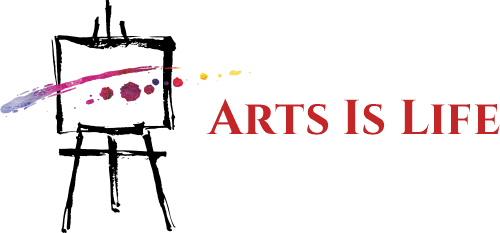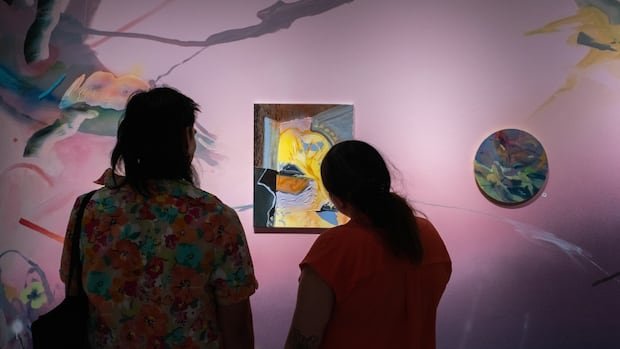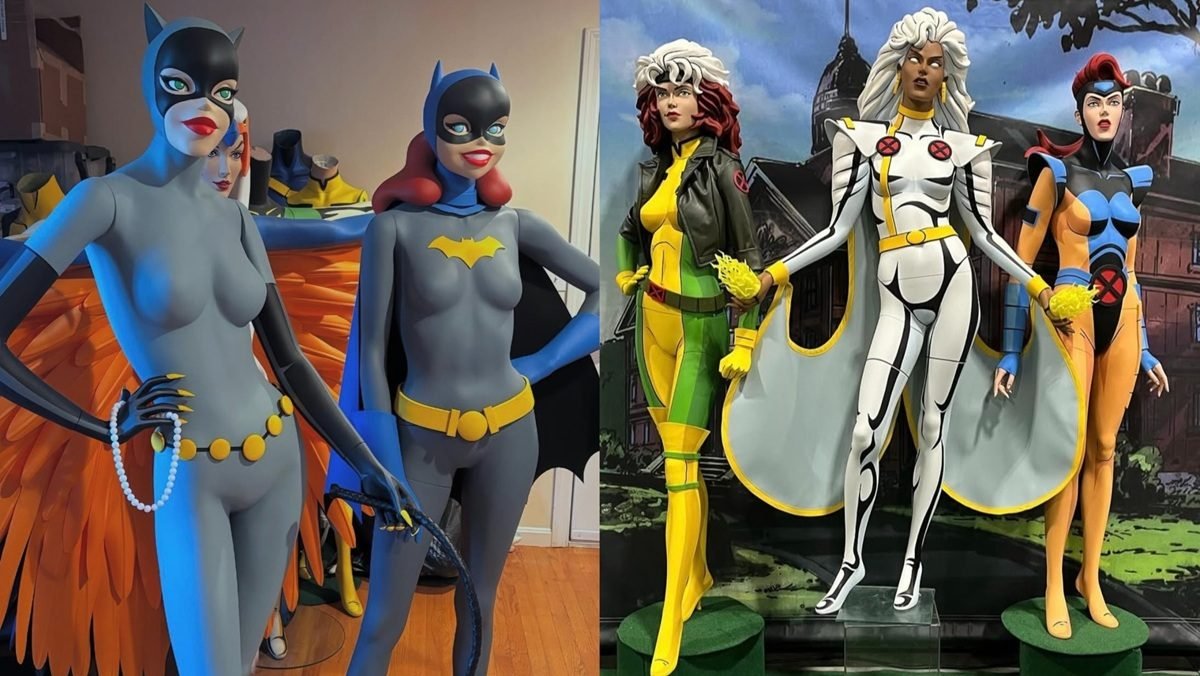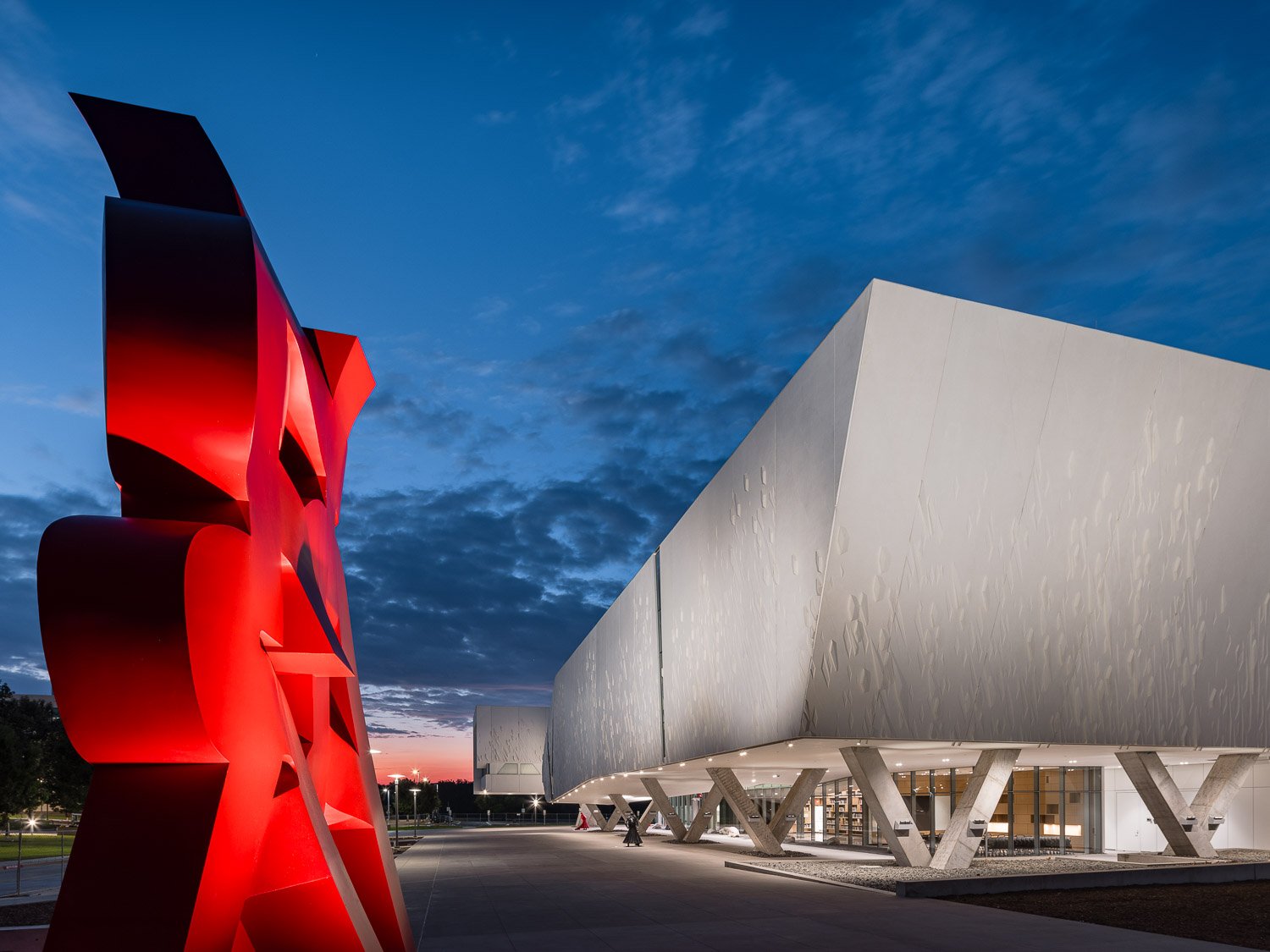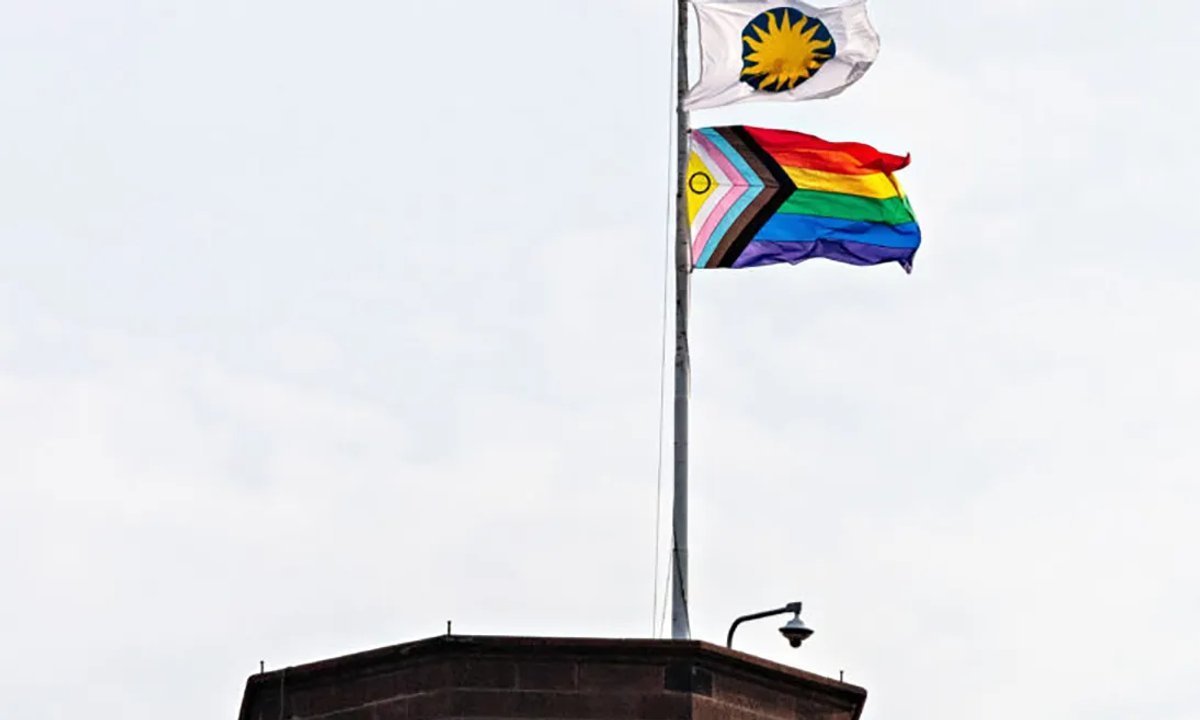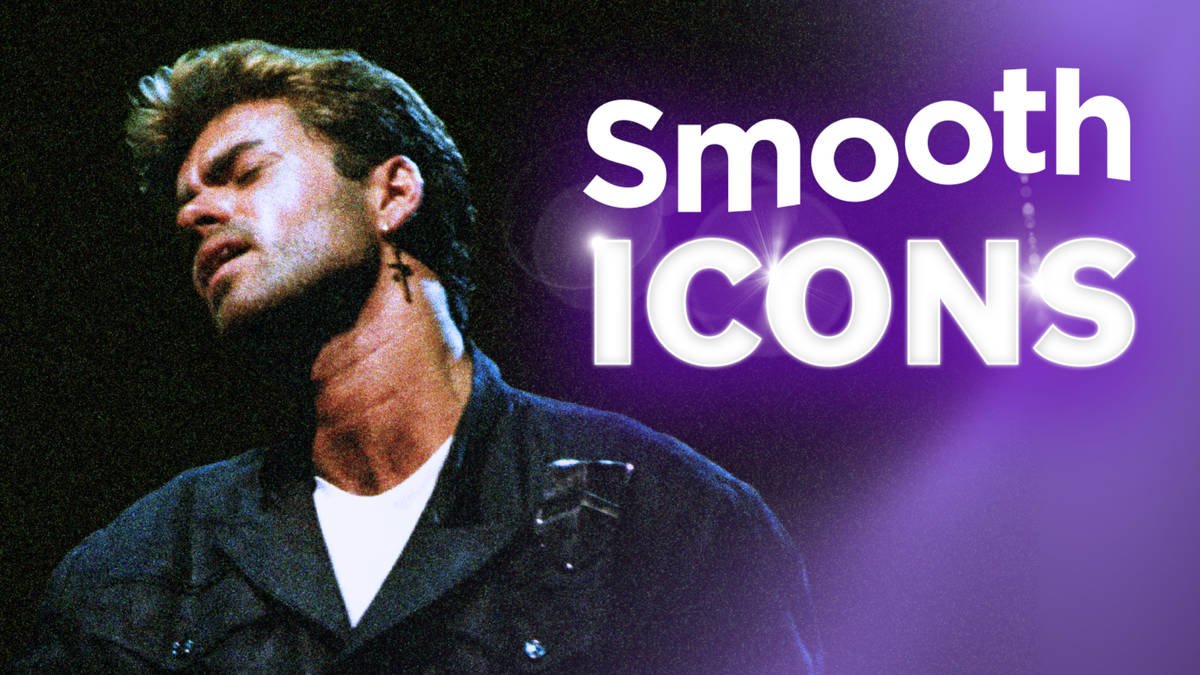It feels ridiculous to say, but abstract painting has come to the Northwest Territories. Ridiculous, because its arrival is a tad late.
Although abstraction has no concrete birth date, it gained traction in Western art more than 150 years ago, when Monet and friends broke the rules and wrecked art forever. The French art critic Albert Wolff called the Impressionist painters “lunatics.” A magazine review from the time said their art was so vulgar, visitors “invariably left with inflamed eyes.”
But now, finally, our Yellowknife gallery has gone vulgar, too. On display until November, the current show at the Yellowknife Visitor Centre art gallery (where, I should disclose, I was once director) features work by Derek Simmers and Lauren Pelc-McArthur.
Titled New Address, the exhibition contains abstract paintings, drawings and a collaborative mural by the pair. The title nods to the “new” kind of art on display, but also acknowledges their new-to-town status (both moved north in 2023 from Toronto). As people often move north temporarily to make a buck, newcomers can be regarded with suspicion. There’s a saying here: “You’re not a ‘Knifer until you’re a lifer.”
But on opening night, it felt like a ripple of Monet’s hijinks had crossed time and space to reach our subarctic town. There was excitement! There was delight! There was consternation, too.
“I just don’t know how to read this kind of work,” one gallery visitor said to me. He was clearly frustrated, if not inflamed. Gazing up at the mural’s wispy brushstrokes, I heard another visitor sigh as though falling in love. “Gosh, do I ever need to loosen up. Think Derek would give me lessons?” Our little gallery was abuzz.

A distinction needs to be made here. Abstraction is ubiquitous. It has existed before, of course, in northern art. Inuit art contains abstracted forms. Local artists stylize the northern lights in a myriad of ways. In the Tłı̨chǫ community of Behchokǫ̀, a 90-minute drive from Yellowknife, there’s a group of painters who use neon hues to describe the natural world. Pink snow, tangerine skies. Fauvism meets Bob Ross. Terrific stuff. There are other examples, too.
But New Address might be the first exhibit of purely abstract art. It doesn’t reference anything northern. It doesn’t reference anything at all, really, outside Rorschachian interpretations.
Simmers’ paintings are amorphous, like weather. Clouds of colour are punctuated by dots and streaks. They feel like you’re squinting at a party scene, one with confetti and streamers. But their moods shift. A Simmers painting might feel celebratory at first, but when you look again, the weather has changed. A subtle sadness has emerged.
“I’m not even sure what I’m going for all the time,” says Simmers. “In this way, the work is only semi-intentional. I’m interested in afterthoughts, in ambiguity, in transitional feelings.”
Pelc-McArthur’s work, on the other hand, is full of hard edges and unruly forms. Iridescent sheens argue with thick pastels. Airbrushed areas and laser-cut stencil work all vie for space — sometimes peaceably, but often with their teeth out.

“I get that they’re jarring,” Pelc-McArthur tells me. “I’m a chronic experimenter, and my experiments dictate the content.” She paints intuitively, but also moves against intuition, exploring aesthetic discomfort. “I try to reconcile all the incongruous elements, which makes them both frustrating and exciting,” she says.
This kind of talk is rare in Yellowknife. For many artists, meaning is found in describing — with realism — the northern beauty they see every day. Other local artists make stuff that scratches an idiosyncratic itch. Their quirky, folksy creations respond to northern life with humour and a sense of play.
Artists like Simmers and Pelc-McArthur, though, use materials — paint and canvas — to express the immaterial. Their art resembles their own unique consciousness, working itself out on the page.
No wonder abstract art is hard to get for some people.
I often joke that artists look like their art, the way people look like their dogs. Simmers is slim, fine boned. His artist’s hand, as the saying goes, is careful and light. If he were a pencil, he’d be a mechanical 2H. When talking about his art, his words drift contemplatively, but never seem to land. Maybe, unlike me, he knows that hard landings are impossible in abstract art. Pinning it down with words is a fool’s errand.
Pelc-McArthur foils my theory. She looks nothing like her art, which, come to think of it, is entirely in keeping with her approach. While she chooses what she calls “aggressively girlish” colours for her paintings — mauves, lilacs — she never wears them and considers them ugly. If she were a pencil, she’d be … lipstick.

“Lauren’s palette makes me feel like I’m suffocating in the folds of my grandma’s blouse,” said artist Mike Mitchell at the opening. “There’s no space to breathe.” Mitchell is one of Yellowknife’s idiosyncratic-itch artists. He’s learned through frequenting “crit night” — a monthly gathering of artists attended by both Pelc-McArthur and Simmers — how to approach abstract art.
At crit night, we once talked for 25 minutes about yellow.
I’ve written copious words on northern art, defending it against charges of parochialism, recognizing it as an anecdote to the pervasive, globalized sameness of the art world. I like art that looks like it’s from somewhere, not anywhere — or worse, nowhere.
But when Simmers and Pelc-McArthur moved to town, they enriched our art scene immeasurably. In a small community, individual personalities take on huge importance. Every artist in Yellowknife is one-of-a-kind, simply because there are relatively few of us.
Simmers and Pelc-McArthur’s work might be a little chic for me — probably because of all that millennial pink. But without it, I may have been in danger of becoming a northern chauvinist, or too knee-jerk in my art-world reactions.

Beautiful or playful homage need not be all that northern art is. It’s so refreshing to visit this new address, where a word like “suffocating” may be taken as a compliment. The conversations between self-taught artists like Mitchell and MFA-trained RBC Painting Award finalists like Pelc-McArthur, are pure gold.
But these conversations assuage creative loneliness, too.
When Simmers described how they hung the show, by “alternating the paintings in an A-B-A-B rhythm,” I knew I was talking to a “real” artist — whatever that means.
I had the same feeling when he explained how the emanata of comic books — the teardrops and question marks comic artists use to portray emotion — first drew him towards abstraction. “I loved the motion lines, how conflict is conveyed in piles of limbs, flying around.”

The influence goes both ways, though. Pelc-McArthur is painting on scrap plywood now. As the stuff practically grows in our ditches, it’s a staple of local folk art.
“I’m also more relaxed here,” she says. “In Toronto, there was always a bad sort of tension, art-wise. But there’s more freedom here to try things. It’s maybe even a bit utopian.”
Simmers agrees. “I went to art school in Red Deer, Alta. And even that was pretentious compared to here,” he says.
He’s right. The North is where art world pretension goes to die — by virtue, but also by necessity. The gallery curator, Laura Hodgins, certainly believes in their work. But there’s also the ever-present possibility of running out of artists to show.
Sometimes, Yellowknife’s art community feels fragile, like it could blow away in the northern wind. But Simmers and Pelc-McArthur have lent local art some muscle. Maybe we’ll stick around. Maybe we’ll even grow and change. Maybe I also like art that looks like it’s from everywhere now.
